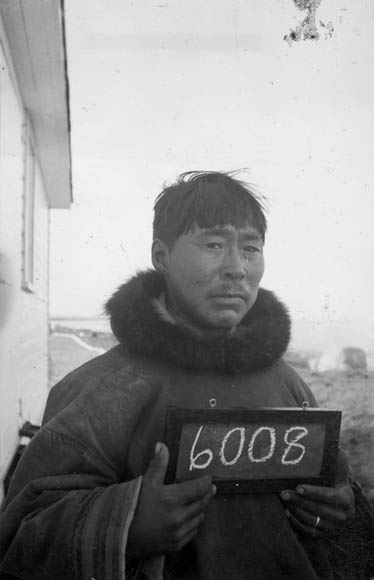Iglulingmiut are Inuit known by the name of an important community site (Iglulik) which translates as "it has houses." Iglulingmiut country extends from Igluligaarjuk (formerly Chesterfield Inlet) on northwestern Hudson Bay northward along Melville Peninsula and across the northern third of Baffin Island. It is part of the Nunavut territory established by the Nunavut Act of June 1993, and Iglulingmiut are beneficiaries under the Nunavut Land Settlement Agreement of the same date (see Nunavut and Confederation). Population estimates of about 500 were made in 1822 and in the 1920s. A dialect of Inuktitut is spoken and main contacts in traditional times were with the Baffin Island Inuit in the northwest and the Netsilingmiut in the southern part of the area. Intermarriage with those groups has occurred since the late 19th century. Important Iglulingmiut community sites have been used since as early as 2000 BCE.
Early Contact History
First European contact dates from the early 19th century. Explorers Sir William Edward Parry, John Rae and Charles Francis Hall visited the area, mapped its coastlines and made contact with Inuit. From 1860 to 1910, a number of US and Scottish whalers wintered in the area. After 1920, trade in white-fox furs and the influence of missionaries and police increased in the area. The reports of the Danish Fifth Thule Expedition, 1921-24, are the main source of information on Iglulingmiut traditional culture. The oral traditions, religion, social and material culture are similar to that of neighbouring groups (see also Inuit Traditional Stories). However, occurrences of superior marine resources, especially walrus and several species of whales, made possible a high level of sustenance.
In 1972, Iglulik became the site of extensive scientific research with the studies of the International Biological Program. Later, a permanent research station was established. In 1974, a silver, lead and zinc mine was opened at Nanisivik on northern Baffin Island, providing employment for a number of Iglulingmiut until it closed in 2002.
Permanent Iglulingmiut communities are concentrated around Repulse Bay, Mittimatalik [Pond Inlet], Hall Beach, Arctic Bay and Iglulik, which were formerly centres of trade.

 Share on Facebook
Share on Facebook Share on X
Share on X Share by Email
Share by Email Share on Google Classroom
Share on Google Classroom







